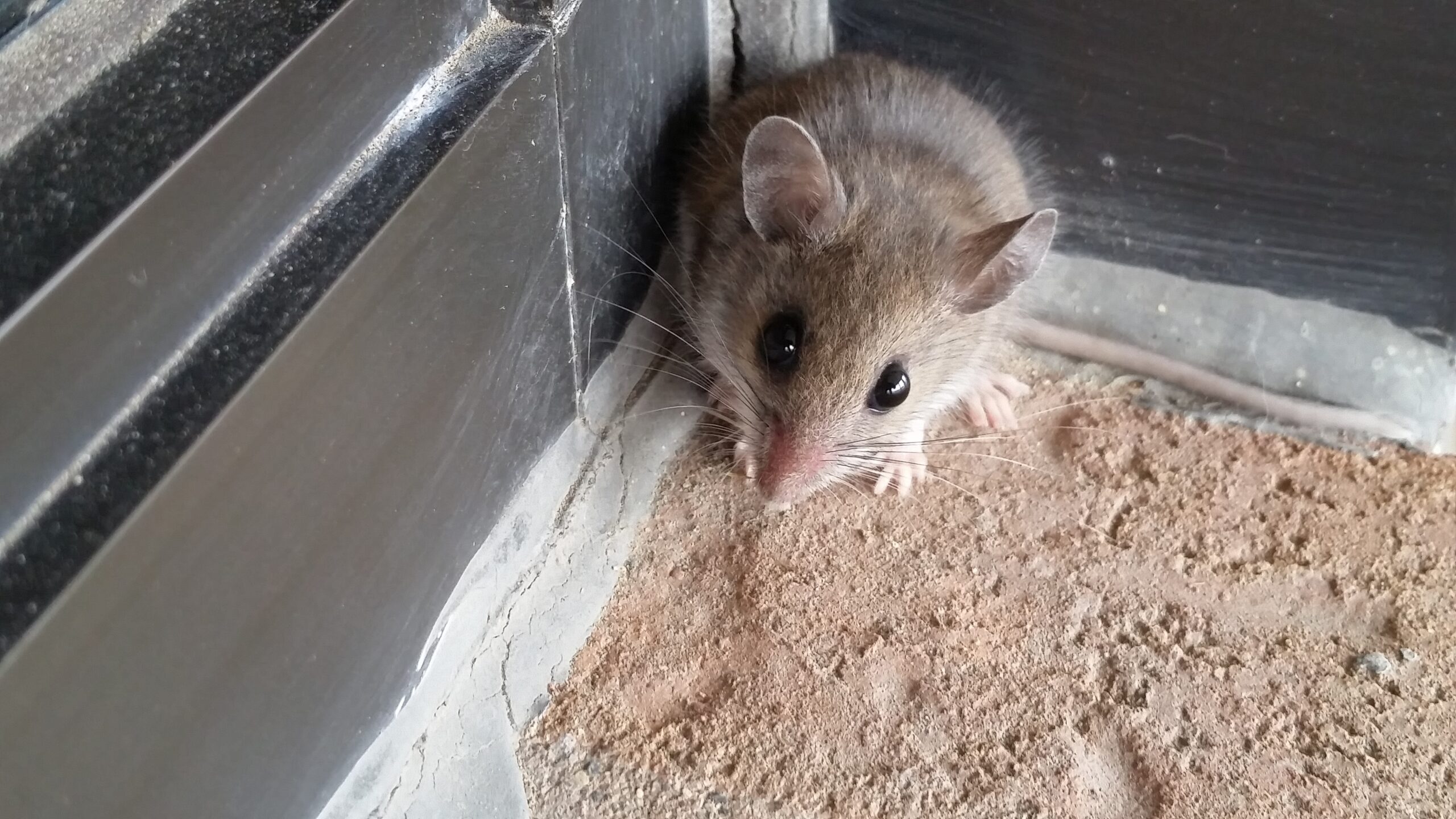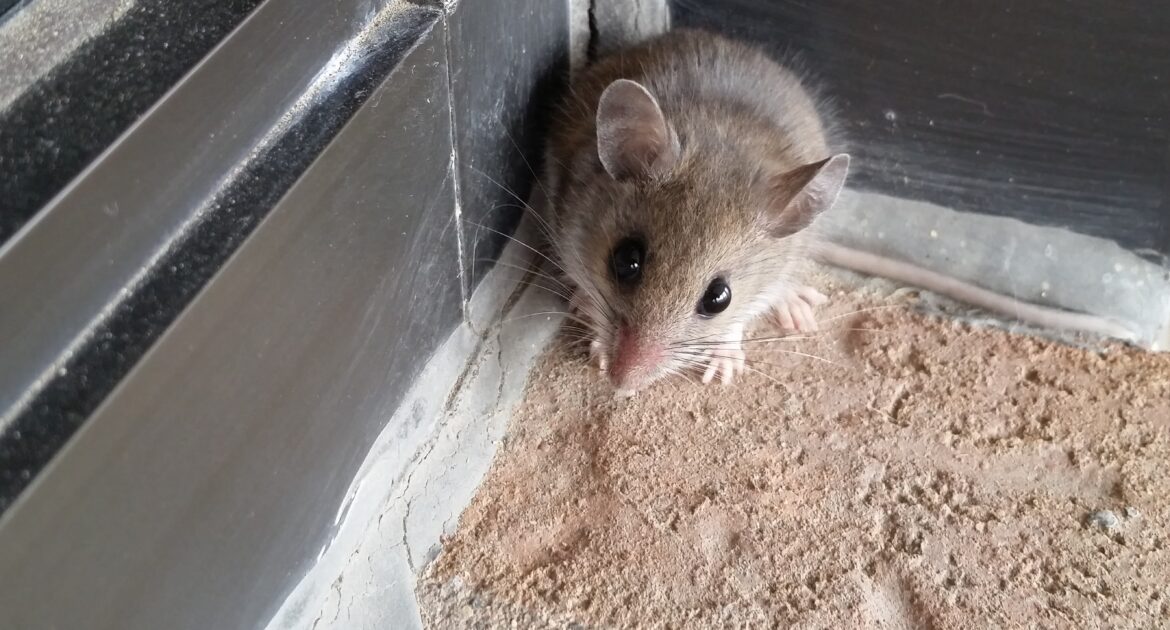Mice are more than just a nuisance—they are breeding machines capable of turning a small issue into a significant problem in no time. Understanding how often mice mate is key to grasping why infestations can escalate so quickly in your Minneapolis home.
Mice can reproduce all year round, but activity spikes during the mouse mating season in spring and fall when they often seek shelter indoors. Female mice can give birth to 6 to 8 pups per litter and can become pregnant again just 24 hours after giving birth. This continuous cycle can lead to an exponential increase in their population.
Ignoring the signs of a bad mice infestation, such as droppings, noise at night, or visible nests, can result in a thriving mouse population that’s harder to control. By acting quickly and addressing the problem at its root, you can prevent the rapid growth of these pests in your home.
Why Mouse Mating Habits Fuel Infestations
Mouse populations are notorious for their ability to grow exponentially in just a short period. Female mice typically reach reproductive maturity within their first six weeks of life. Once mature, the average female can reproduce every 21 days, with each litter consisting of six to eight pups. That means a single mouse can add dozens of offspring to its population in mere months.
These reproductive habits aren’t limited to particular times of the year, making things even more challenging for homeowners. Unlike many wildlife species, mice don’t have designated mating seasons. While their activity may spike slightly during warmer months, mice breed throughout the year, especially if they’ve found a warm, food-filled habitat like the inside of your home. This year-round reproduction means one or two mice can evolve into a full-blown infestation almost before you’ve noticed they’re in your house.
Adding to the problem is the way mice behave socially. Mice are highly communal and thrive in environments where resources (like food and warmth) are abundant. A single colony will multiply quickly, and as resources shrink, mice will branch out to form satellite colonies within your home. This allows the infestation to creep from your basement to your attic, involving more nesting sites and higher chances for damage.
Ignoring the impact of mouse mating habits can lead to severe consequences for homeowners. It is essential to address infestations promptly to prevent further damage and ensure the well-being of your living environment. By partnering with professional pest control services, you can effectively eliminate mouse populations and implement preventive measures to safeguard your home from future infestations.
The Risks of Overlooking the Mouse Mating Season
Although there’s technically no single mouse mating season due to their year-long breeding, colder months are particularly concerning. Mice instinctively seek shelter during fall and winter when outdoor food supplies diminish. Unfortunately, this often leads these small invaders into the warm, insulated spaces in homes. If they establish nesting sites during this time, homeowners may find that the population inside their house explodes as spring arrives.
The continuous breeding patterns also make these pests harder to detect. A problem that might initially seem contained—a couple of mice in the kitchen corners—quickly becomes widespread. Mice can reproduce before their presence becomes obvious to the average homeowner, leaving you with a sudden infestation that causes significant damage. This is particularly concerning for two reasons:
- Mice damages: From chewed wires (posing fire hazards) to soiled insulation and destroyed ducts, mice can compromise various structural and functional aspects of a home.
- Health risks: Mice droppings and urine are known carriers of diseases like salmonella and hantavirus, leading to serious health risks for your family.
Being mindful of when mice are most likely to invade (typically during seasonal transitions) is crucial. Recognizing these patterns can help prevent the population from spiraling out of control.
Key Signs of a Bad Mice Infestation
Catch the problem early, and an infestation may remain manageable. But it’s critical to know the telltale signs of a bad mice infestation to intervene while you still have the chance. The longer a colony is left undetected or unmanaged, the more widespread the damage can become.
Some of the most common signs include:
- Nocturnal noises: Scratching, scurrying, or gnawing sounds in walls, ceilings, or floors, particularly during nighttime when mice are most active.
- Droppings and urine stains: Small, dark pellet-like droppings found in cupboards, along baseboards, or near food storage are a dead giveaway. A strong ammonia-like odor may also be present.
- Nesting materials: Shredded paper, fabric, or insulation tucked into corners or voids often signals attempts to create nests.
- Gnaw marks: Look for chewed packaging, frayed wires, or bite marks on wooden surfaces, which indicate active chewing.
If you’re noticing these warning signs accompanied by frequent daytime sightings of mice, your infestation may already be severe. Mice typically avoid venturing into open spaces unless their nesting area is overcrowded or food scarcity is forcing them to take risks.
The Skedaddle the Process for Mice Removal
At Skedaddle, we have over three decades of experience handling everything from minor mice issues to extensive infestations. What sets us apart is our combination of humane wildlife control practices and thorough attention to detail, ensuring that infestations are removed efficiently while making sure there’s no opportunity for re-entry.
Our process begins with an extensive property assessment, designed to identify all potential entry points mice could exploit. From gaps around utility lines to weep vents and foundation cracks, our technicians locate the pathways these rodents use to infiltrate your home. Once identified, we install durable, one-way doors over these entry points. This allows any remaining mice to safely exit while ensuring they can’t come back inside.
Next, we turn our attention to contamination. Cleaning up after mice is as important as removing them, given the health and structural risks associated with their droppings and urine. Using specialized equipment and techniques, our staff meticulously removes all traces of nesting material and decontaminates affected areas to restore your home to a safe environment.
Finally, we implement permanent exclusion measures to ensure your property remains secure. Using high-grade materials like heavy-gauge steel screening and reliable sealing solutions, we close every gap and crack to protect against future infestations. Our commitment to long-term results is what makes us a trusted name across hundreds of homes.
Protecting Your Home Starts with Understanding
Mice are more than just occupants—they’re household-level disruptors. Their rapid breeding, year-round activity, and affinity for human environments make them a formidable challenge for homeowners. Left unchecked, even a small infestation can multiply rapidly, damaging both your property and peace of mind.
Understanding the biological and behavioral factors that fuel mice infestations gives homeowners an edge. By recognizing early warning signs and knowing when to call in the professionals, you can stop infestations from taking root.
If you suspect mice might be nesting in your home, don’t wait for the problem to worsen. At Skedaddle Wildlife Control in Minneapolis, our goal isn’t just to eliminate infestations but to help homeowners feel secure and confident in their space again. Reach out today, and our team will provide the expert care and attention you need to reclaim your home.




